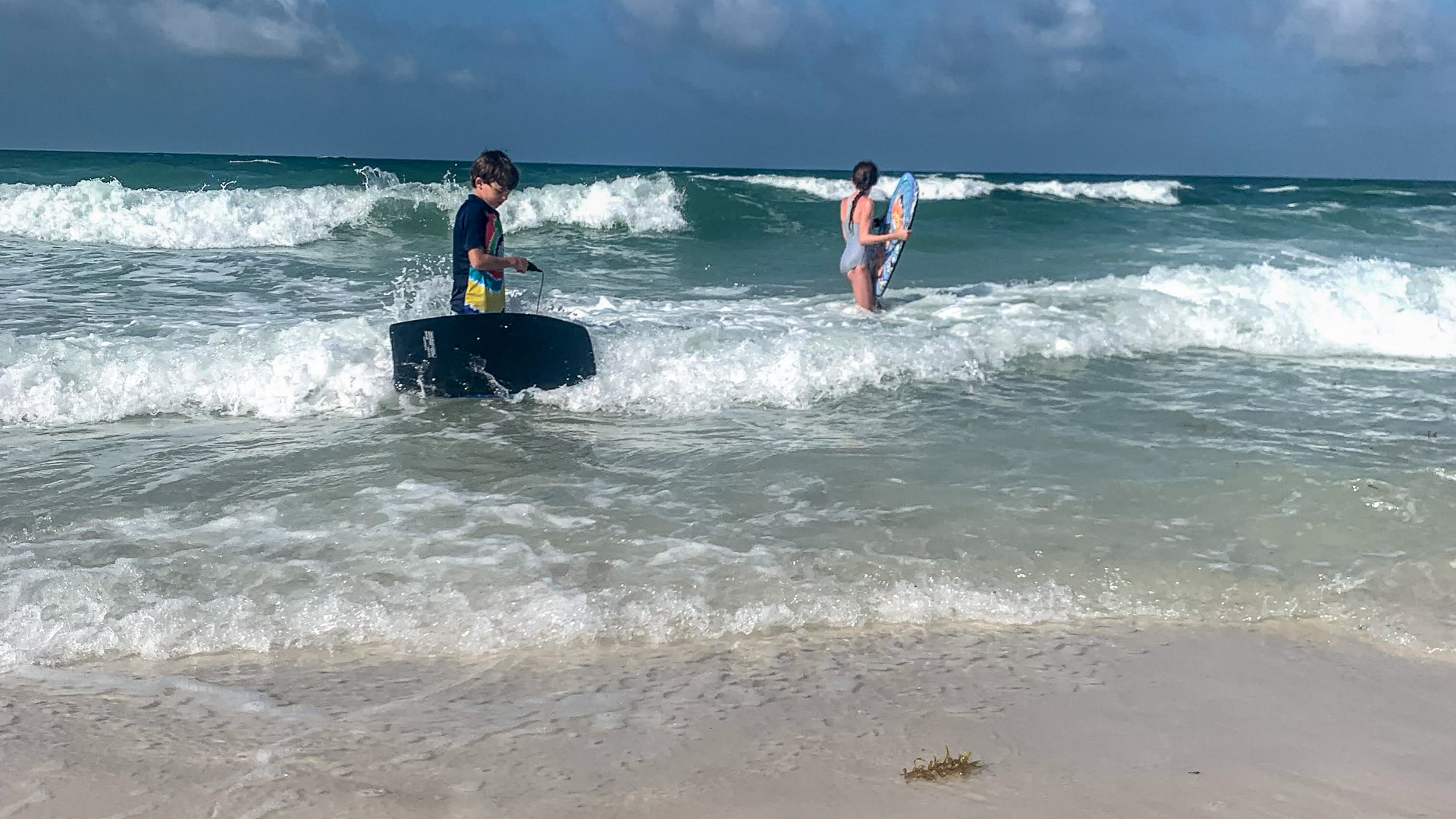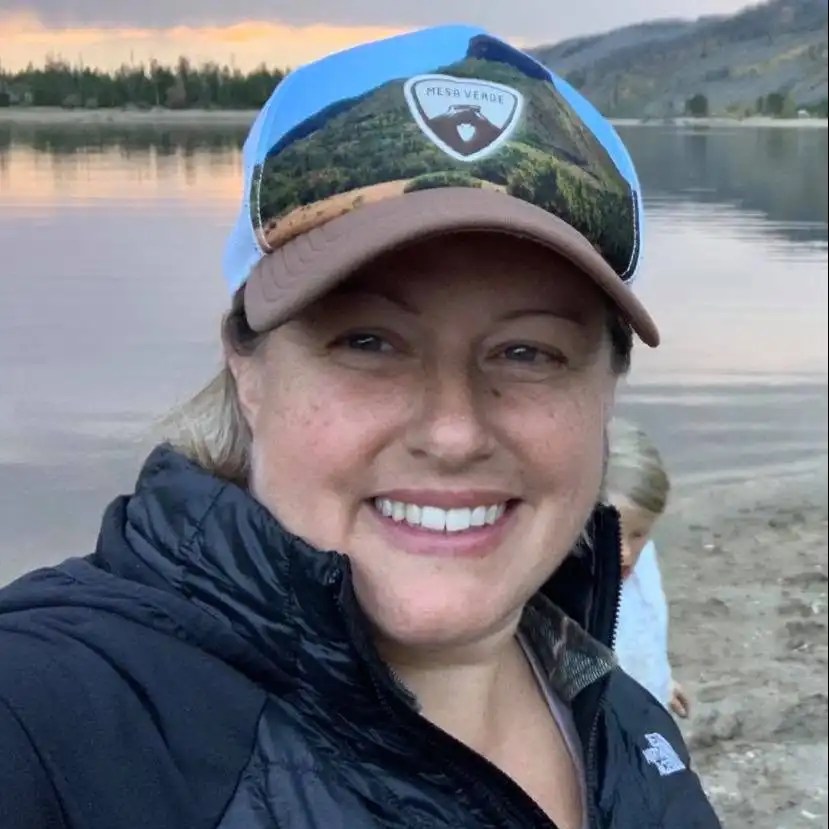
Whether you call it boogie boarding or bodyboarding, catching some waves is a summer rite of passage. Adults and kids of all ages can enjoy the adrenaline rush of catching a wave. These simple tips will help you make the most of those first boarding experiences.

The Size Matters
For those first few waves, and for the occasional wave riding, a generic board from a surf or tourist shop will do. But if you want to maximize your wave riding, select a board based on your height and weight.
Stand the board up on its tail. The right-size board should measure about 1 inch or so from your belly button. Height-wise, kids will want a board shorter than 40 inches (5 feet, 6 inches or less and less than 130 pounds). If you weigh between 130 and 210 pounds and are 5 feet, 7 inches and above, choose a board that’s 40 to 43 inches. If taller, choose a board around 44 inches. Width-wise, you’re aiming for the board to have little space between the edge of the board and your armpit when you hold the board under your arm against your side.

Wear The Right Clothes
Do not wear clothes that are constrictive and keep you from being able to paddle with your arms and kick with your legs. Rash guards and board shorts are great for sun protection while you bob up and down waiting for the perfect wave. They will also keep you warmer while you sit watching for the best waves. They also help protect riders from the sandy beach bottom. Some people may even choose to wear a wetsuit, depending on the water temperature. If you are just starting, flippers or fins aren’t necessary.

Stay Calm
For those who are new to boogie boarding, do it a few times a year or have kids in tow, choose a calm spot for catching some waves. Choose a location that is away from piers or other fishing spots. Avoid spots that have large rocks and other hazards. Waves that are 2 feet or less are ideal for those first sessions.
A good rule of thumb is picking a location where you would feel comfortable swimming if you didn’t have a board with you. Finding a beach break where the waves crash farther away from the shoreline is also ideal.
Warm water will keep the kids out longer. A location where kids can touch bottom the whole time will also help with their confidence and overall safety. When researching, look for areas where they give kids surf lessons, as these places will have smaller waves and be in areas with fewer hazards. Children should be confident swimmers and be supervised at all times. A boogie board should not be viewed as a flotation device.

Be Secure
Before paddling out to catch your first wave, be sure that your boogie board is securely attached to your arm or wrist. This will help keep you from losing the board while fighting the current and any waves as you head out.
If you happen to fall off the board while catching a wave, the board will stay with you. This also keeps others around you safe so that the board won’t run into them as the waves toss it around. Even the best riders use the leash as a basic safety precaution.

Don’t Wear Yourself Out Paddling Out
With your board securely attached to your wrist or arm, hold the board and walk into the water. Once the water is about knee level, place your board out in front of you. Lay down on your belly on the board. Your hips should be touching the tail of your board. Place your hands on the board at 10 and 2.
Begin to kick with your legs, keeping your feet under the water. Paddle using one or both of your hands. Think of yourself as reaching straight out to grab for something and then scoop the water toward you. Be sure to keep your eyes forward, watching the waves.
Paddle out to where the waves are breaking. Hop over any waves that break, or lift the board up and over the wave. While you are paddling, watch out for the behavior of the waves in front of you. If boarding with kids, push them out to where the waves are breaking as they build their skills and confidence. The best way to keep from getting tired is to attack the waves straight on, not from the side.

Choosing A Wave To Ride
Not all waves are created equal. While the goal is to ride the wave all the way to the end, sometimes waves break early or just don’t have the power to carry you all the way to the beach.
Learning to read the waves takes time, and the more you ride, the better at reading them you will get. It’s something that comes with observation and experience. Begin with smaller and less powerful waves as you learn to understand body position, wave features, etc. Be conscious of the other people around you, so you can avoid running into others who are enjoying the surf.

Catch A Wave
Now that you have paddled out, it is time to catch that first wave. Once you spy a wave you like, turn your board around so that the front is pointed toward the beach. Keep centered on your board with your chest and head up.
Paddle and kick toward the beach to stay a bit ahead of the wave. Create momentum by paddling so that you are scooping the water. Make sure your feet stay under the water as you are kicking. This momentum will help you go faster and carry you longer on the wave.
The goal is to be in the belly of the wave to get the best, longest and safest ride. This means being higher on the wave and not where the wave is about to break. Once the wave is pushing you, you no longer have to paddle or kick. Keep your elbows out of the water, and be sure that your body stays centered on the board.
With additional experience, your body will be able to react to the wave. If you want to turn right, lean to the right. Use your right elbow to put more pressure on the board, and use your left hand to grip the left rail. To turn left, do the opposite. More advanced moves include cutbacks and 360s.
If you are boarding with kids, most likely there will be a learning curve, albeit usually a short one depending on the age they start. Begin by demonstrating proper form and technique. Talk to them about the waves. Remind them that kicking into the wave will help them catch the wave in the belly. Pushing them into waves in the beginning will help them understand how waves behave. Pretty soon, they will be catching waves on their own.
Extra Tips:
Although not necessary, waxing your boogie board can help you stick on your board. This will become more important as you begin to catch bigger waves or to work on maneuvering the board more. The most important places to apply wax are on the nose (top third of the board), rails (edges on the sides of the board), and the tail (the bottom third of the board).





